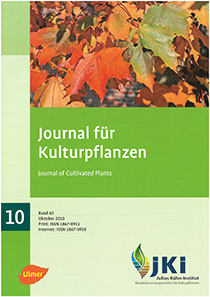Distribution and abundance of <em>Beta patula</em> Aiton and other crop wild relatives of cultivated beets on Madeira
DOI:
https://doi.org/10.5073/JfK.2010.10.01Keywords:
Archipelago of Madeira, Crop Wild Relative, Beta patula, Patellifolia, distribution, genetic resource, beet breeding, genetic reserve, in situ conservationAbstract
In the Archipelago of Madeira four crop wild relatives of beets are native: Beta patula, Beta vulgaris subsp. maritima, Patellifolia procumbens, and Patellifolia patellaris. All species are valuable genetic resources for the sugar beet breeding. Only in the very eastern part of the Madeira Island on the islet Ilhéu do Desembarcadouro and Ilhéu Chão the endemic species Beta patula can be found. On both islets the plant number of this very rare species, and of the two widely distributed species B. vulgaris subsp. maritima and P. procumbens was established and the habitat described. The results of the species census are presented. The establishment of a genetic reserve for Beta patula is suggested in this paper with the objective to protect this species more effectively.
Published
Issue
Section
License
The content of the journal is licensed under the Creative Commons Attribution 4.0 License. Any user is free to share and adapt (remix, transform, build upon) the content as long as the original publication is attributed (authors, title, year, journal, issue, pages).
The copyright of the published work remains with the authors. The authors grant the Journal of Cultivated Plants, the Julius Kühn-Institut and the OpenAgrar repository the non-exclusive right to distribute and exploit the work.







